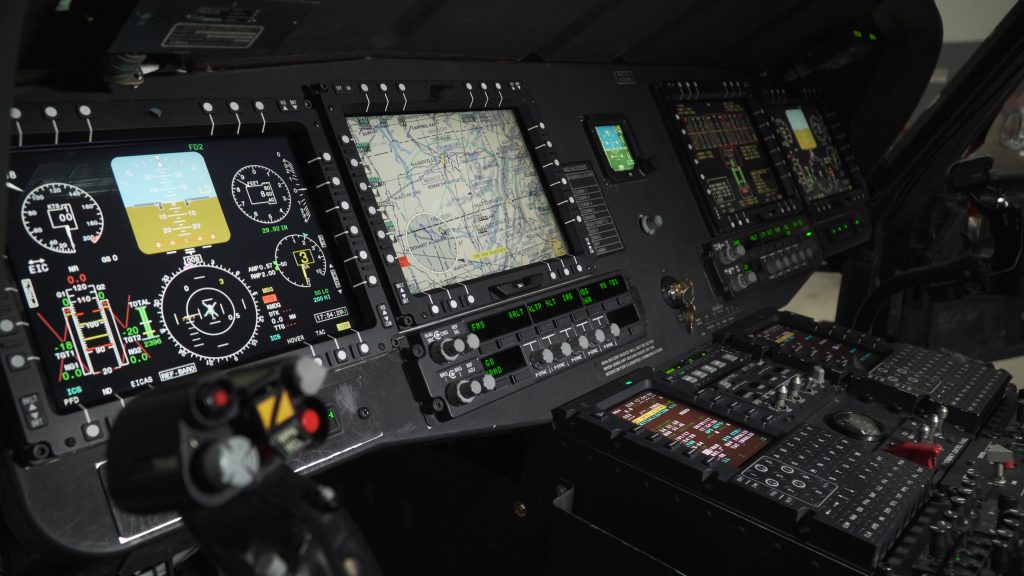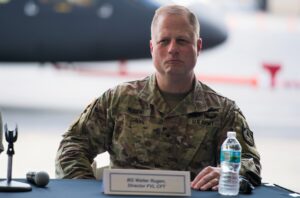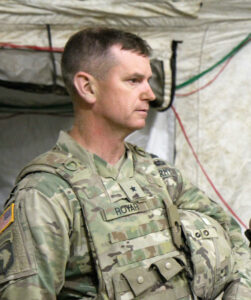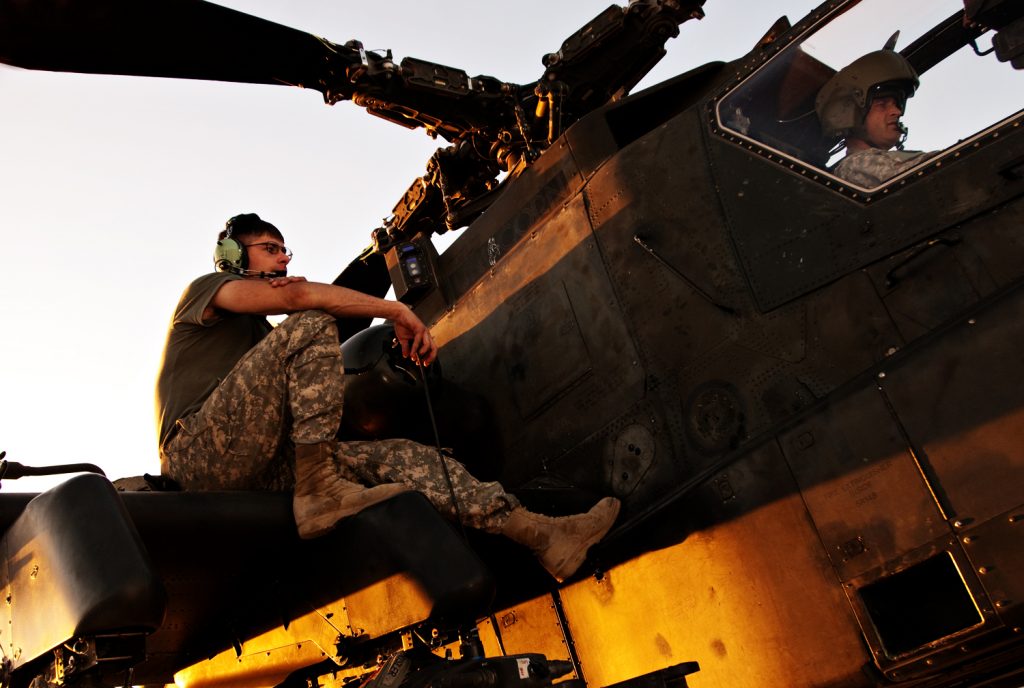
The digital, open-architecture cockpit of the upgraded UH-60V “Victor” Black Hawk, a forerunner of the future Modular Open Systems Architecture
WASHINGTON: When Future Vertical Lift systems enter Army service, new drones and high-speed helicopters won’t be the only things flying through the air. Linking the photogenic FVL aircraft will be an invisible network, transmitting data directly from one machine to the next, without the clumsy, slow-moving intermediary of human voices over the radio or human hands on a keyboard. This Modular Open Systems Architecture will be essential to FVL’s performance across the board, from combat to maintenance to long-term upgrades.

Brig. Gen. Walter Rugen
“Probably one of the hardest things we’re going to do is affordability,” said Brig. Gen. Walter Rugen, the Army’s FVL director, in an interview with Breaking Defense. Because military systems have to serve for decades, the really big bill here isn’t procurement, it’s long-term maintenance, sustainment, and upgrades to keep the aircraft not only functional but up to date.
Replacing worn-out or obsolete components with new and better ones adds up tremendously over the years, Rugen told me: “68 percent of our total cost of ownership is the sustainment of the fleet.”
The Army’s worked hard to control those costs with its current fleet of aircraft. But there are hard limits on how efficient you can become when different types of aircraft – and even aircraft of the same type built at different times – use different electronics, none of which were built with ease of maintenance and upgrades in mind. Most components don’t have built-in diagnostic chips the way a modern automobile does, for instance, so the only way to check whether they’re working is to unscrew an access hatch and look inside. If something is broken or just out of date, then swapping a single part, even something as simple as a cockpit display, may require laboriously rewriting code on several other systems that interact with it.

Then-Brig. Gen. Todd Royar during a 101st Airborne Division exercise.
“In our current systems, Army Aviation has done a phenomenal job of leading the Army on condition-based maintenance,” said Maj. Gen. Todd Royar, chief of Aviation & Missile Command (AMCOM). “We are pretty far out there about collecting data and knowing when something is going to fail.” Using diagnostics this way allows repair crews to intervene when needed, instead of either waiting for a problem to become obvious – which means problems become more dangerous and expensive to fix – or conducting laborious preventive maintenance just-in-case – which consumes countless man-hours of highly trained ground crews.
“However,” Royar told me, “we did that by platform, and each individual platform uses a different system to be able to do that. As we move forward, the intent is to go ahead and make sure that we have a common platform for condition-based maintenance. We think this will fundamentally change how maintenance is done… which will ultimately drive down cost.”
Those common maintenance diagnostics will be built into the Modular Open System Architecture. Rather than prescribe to contractors how to do it or let each contractor come up with their own, incompatible proprietary solution, the Army will dictate common standards and interfaces, made available to all – hence “open.” That should allow the military to replace a piece of code from one vendor with better code from another, without having to rewrite the rest of the system – hence “modular.”
Royar’s command, which handles maintenance, is working with Rugen’s FVL team and the Program Executive Office for Aviation procurement, Patrick Mason, to write this into the formal requirements for FVL.
“In the draft documents… we have put the hooks in there to make sure that industry knows that that is going to be a requirement,” Royar said. “When we send out the proposals to industry, we will direct that certain things be common as far as condition-based maintenance is concerned: what they measure, how they measure it, how the ones to zeros are holding, so that the unit…can get that same data, regardless of whether they’re looking at FARA, FLRAA, or one of our enduring systems.”
The Army hopes to backfit at least parts of MOSA onto its existing helicopter fleets, which will serve for decades to come, with the FVL aircraft replacing them over time. Whenever possible, it will upgrade different types of existing aircraft in ways that make them more compatible and use more common systems. But it’s with FVL that MOSA will fully come into its own.

An Army maintainer working on an AH-64 Apache in Iraq
The Army’s determined to enforce common standards and common software in a way it never has before, Rugen told me. “The number one challenge we have with MOSA is … that discipline and management,” he said. “[What] allowed the enduring fleet of aircraft to wind up with different architectures [is] there was not a driving central body that said, ‘this is the architecture that you are going to go with.’… With MOSA, we have that.”
“It really comes down to defining that government standard, and defining that government interface, and then … holding to it,” Rugen told me. “The PEO has led the charge with the architecture control working group, meeting quarterly, [with] industry participating.”
This may sound bureaucratic and technical, but getting MOSA to work is a literal matter of life and death. It won’t just transmit maintenance data, helping forestall breakdowns and prevent accidents. It will also transmit tactical data, helping manned and unmanned FVL aircraft coordinate with each other in combat.
“That system architecture [has] open systems, interfaces, and gateways, so we can push data” seamlessly across the force, Rugen said, without incompatible systems on different aircraft stopping the flow of information. “We’re refining our data formats to auto-populate nine-lines [i.e. calls for urgent medical evacuation], calls for fires [i.e. artillery and air strikes], our production, exploitation and dissemination of intelligence.”
How soon will elements of this system become available to soldiers? It will enter service before the manned FVL aircraft do. Rugen’s FVL modernization team is working with their counterparts for the Army network. They’ll field new data-sharing systems as part of the 2023 upgrade, known as Capability Set 23. But that will just be the beginning of a multi-year effort to build Army aviation’s invisible, digital backbone.






















